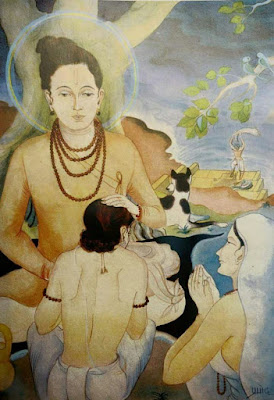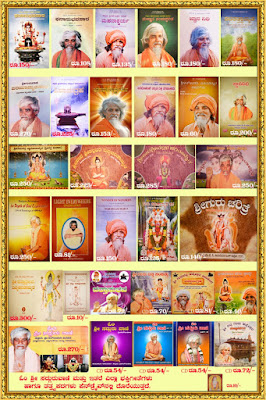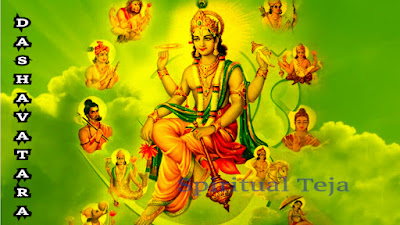ಶ್ರೀರಾಮಕೃಷ್ಣರ ಮಾತಿನಿಂದ ಅಹಂಕಾರವನ್ನೇ ಕಳೆದುಕೊಂಡ.
ಶ್ರೀರಾಮಕೃಷ್ಣರ ಮಾತಿನಿಂದ ಅಹಂಕಾರವನ್ನೇ ಕಳೆದುಕೊಂಡ.
ಮನುಷ್ಯ ಸ್ವಲ್ಪ ಸಾಧಿಸಿದರೂ ಸಾಕು ಅಹಂ ಎನ್ನುವುದು ಸಹಜವಾಗಿ ಬರುತ್ತದೆ. ಅದು ಎಲ್ಲಿವರೆಗೆ ಎಂದರೆ ಆತನಿಗೆ ಇನ್ನೊಬ್ಬರು ನೀನು ಸಾಧಿಸಿರುವುದು ಏನೂ ಅಲ್ಲ, ಬರೀ ಅತ್ಯಲ್ಪ ಎಂದು ಸಾಬೀತುಪಡಿಸಿ ತಿಳಿವಳಿಕೆ ಹೇಳುವವರೆಗೂ ಅಹಂಭಾವ ಕಡಿಮೆಯೇ ಆಗುವುದಿಲ್ಲ. ಪ್ರಾಧ್ಯಾಪಕನಾಗಿದ್ದ ಮಹೇಂದ್ರನಾಥನಿಗೂ ಇದೇ ಪರಿಸ್ಥಿತಿ ಇತ್ತು.
ಬ್ರಾಹ್ಮಸಮಾಜದ ಪ್ರಭಾವಕ್ಕೊಳಗಾಗಿದ್ದ ಮಹೇಂದ್ರನಾಥನಿಗೆ, ಮೂರ್ತಿ ಪೂಜೆ, ಸಾಕಾರ ತತ್ತ್ವದಲ್ಲಿ ನಂಬಿಕೆ ಇರಲಿಲ್ಲ. ನಿರಾಕಾರದಲ್ಲೇ ನಂಬುಗೆ ಜಾಸ್ತಿ. ಅದಕ್ಕೆ ಶ್ರೀರಾಮಕೃಷ್ಣರು, ನಿರಾಕಾರದಲ್ಲಿ ನಿನಗೆ ವಿಶ್ವಾಸವೆಂದರೆ ಒಳ್ಳೆಯದು. ಆದರೆ ನಿರಾಕಾರವೊಂದೇ ಸತ್ಯ. ಸಾಕಾರ ತತ್ತ್ವ ಸತ್ಯವಲ್ಲ ಎಂದು ಭಾವಿಸಬೇಡ ಎಂದಿದ್ದರು.
ಆಗ ಮಣ್ಣಿನ ಮೂರ್ತಿ ಬಗ್ಗೆ ತಗಾದೆ ತೆಗೆದಿದ್ದ. ಮಣ್ಣಿನಲ್ಲೇನು ದೇವರು ಇರುತ್ತಾನೆಯೇ? ಮಣ್ಣಿನ ಪೂಜೆ ಮಾಡುವವರಿಗೆ ಇದನ್ನು ತಿಳಿಸಬೇಕು ಎಂದೆಲ್ಲ ಗುರುಗಳಿಗೆ ಹೇಳಿದ್ದ ಮಹೇಂದ್ರನಾಥ.
ಅದಕ್ಕೆ ಶ್ರೀರಾಮಕೃಷ್ಣರು, ಮಣ್ಣಿನ ಮೂರ್ತಿ ಎಂದೇಕೆ ಹೇಳುತ್ತಿ. ಅದು ಚಿನ್ಮಯ ಮೂರ್ತಿ. ಇಡೀ ಬ್ರಹ್ಮಾಂಡವನ್ನೇ ಸೃಷ್ಟಿಸಿದ್ದು ಭಗವಂತ.
ತನ್ನನ್ನು ಯಾವ ರೀತಿ ಪೂಜಿಸಬೇಕೆಂಬುದನ್ನು ಜನರಿಗೆ ತಿಳಿಸಿಕೊಡದಿರುತ್ತಾನೇನು? ಮಣ್ಣಿನ ಮೂರ್ತಿ ಮೂಲಕ ಪೂಜಿಸುವುದು ತನಗೆ ಎಂಬುದು ಆತನಿಗೆ ಗೊತ್ತಿರುವುದಿಲ್ಲವೇ? ಆ ಬಗೆಯ ಪೂಜೆಯಿಂದಲೇ ಅವನು ಸಂತೃಷ್ಟನಾಗುತ್ತಾನೆ.
ಆ ಬಗ್ಗೆ ಚಿಂತಿಸದೇ ನಿನ್ನೊಳಗಿನ ಜ್ಞಾನವನ್ನು ಬೆಳೆಸಿಕೋ. ಆ ಭಗವಂತನನ್ನು ಸಾಕ್ಷಾತ್ಕರಿಸಿಕೊಳ್ಳಲು ಪ್ರಯತ್ನಿಸು ಎಂದು ತಿಳಿ ಹೇಳಿದ್ದರು. ಇದೇ ರೀತಿ ಎರಡ್ಮೂರು ಉದಾಹರಣೆ ಕೊಟ್ಟು ಅಹಂಗೆ ಪೆಟ್ಟು ಕೊಟ್ಟಿದ್ದರು.
ಆಗ ಮಹೇಂದ್ರನಾಥನ ಅಹಂಭಾವವವೆಲ್ಲ ಮಾಯವಾಗಿತ್ತು. ಭಗವಂತನ ಬಗ್ಗೆ ಜನರಿಗೆ ಬುದ್ಧಿ ಹೇಳಲು ತನಗೇನು ಅರ್ಹತೆ ಇದೆ? ತಾನೇನು ಭಗವಂತನನ್ನು ಸಾಕ್ಷಾತ್ಕರಿಸಿಕೊಂಡಿದ್ದೇನೆಯೇ? ಎಂಬ ಯೋಚನೆಯನ್ನು ಮಾಡಲಾರಂಭಿಸಿದ. ಜತೆಗೆ ಅಷ್ಟು ದಿನ ಬರೀ ನಿರಾಕಾರವನ್ನಷ್ಟೇ ನಂಬುತ್ತಿದ್ದ ಮಹೇಂದ್ರನಾಥ, ಬಳಿಕ ಸಾಕಾರ ತತ್ವಕ್ಕೂ ಅಷ್ಟೇ ಮಹತ್ವ ಕೊಡಲಾರಂಭಿಸಿದ.
ಆತನ ಮನಸ್ಸಿನಲ್ಲಿದ್ದ ಅಹಂಭಾವವನ್ನೆಲ್ಲ ಕ್ಷಣಮಾತ್ರದಲ್ಲೇ ಶ್ರೀರಾಮಕೃಷ್ಣರು ಬರೀ ತಮ್ಮ ಮೊನಚಾದ ಮಾತುಗಳಿಂದಲೇ ಇಲ್ಲವಾಗಿಸಿದ್ದರು. ಆ ಬಳಿಕವಷ್ಟೇ ತನ್ನಲ್ಲಿನ ಗೊಂದಲಗಳನ್ನು ಬಗೆಹರಿಸಿಕೊಂಡು ಆಧ್ಯಾತ್ಮಿಕತೆಯತ್ತ ಒಲವು ಹೆಚ್ಚಾಗಿ ಅದರಲ್ಲಿ ಸಾಧನೆ ಮಾಡಲು ಶುರು ಮಾಡಿದ.
ಸಂಗ್ರಹ - ಶಿವಾನಂದ ಗೊಂಬಿ

















